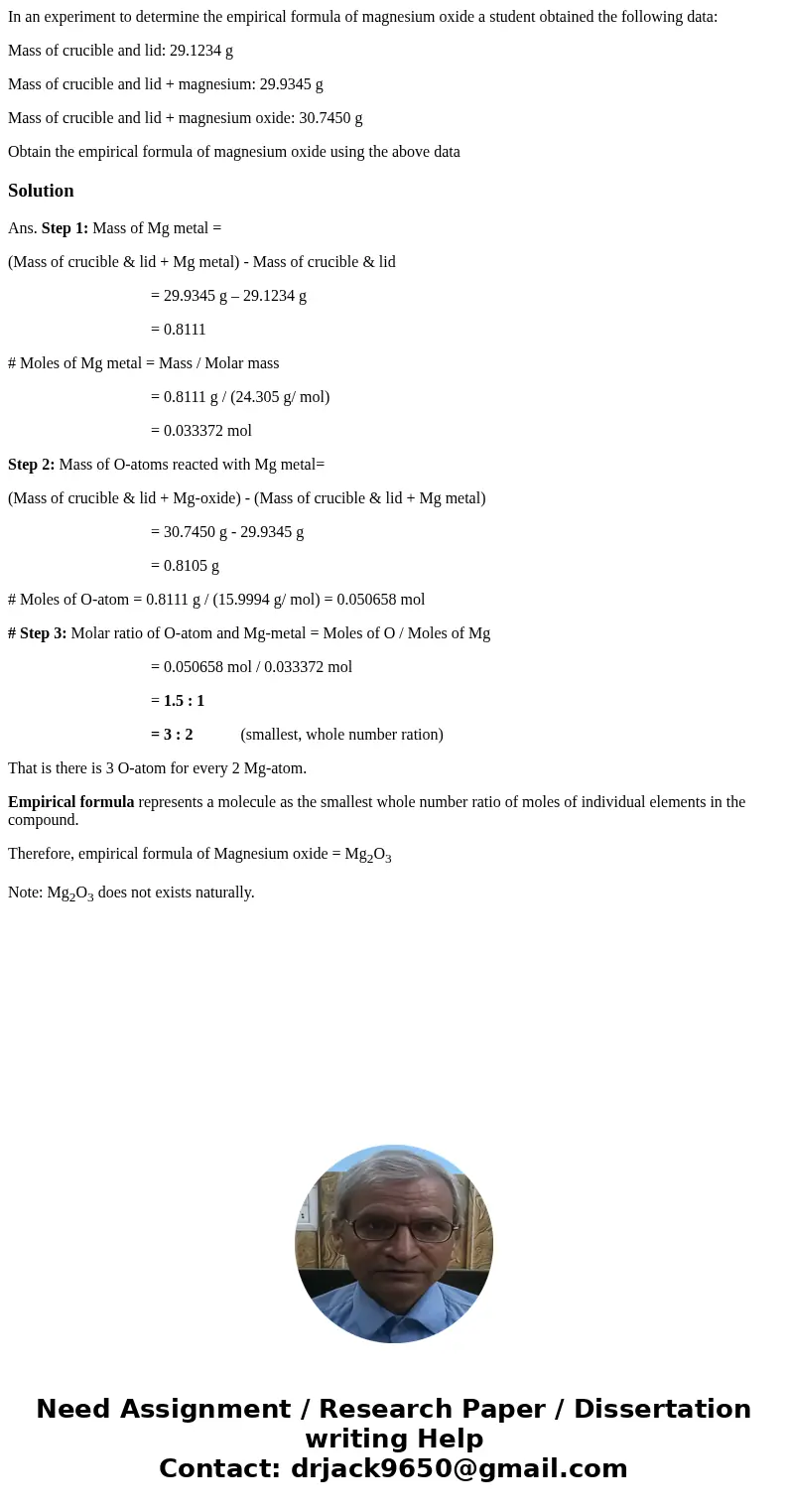In an experiment to determine the empirical formula of magne
In an experiment to determine the empirical formula of magnesium oxide a student obtained the following data:
Mass of crucible and lid: 29.1234 g
Mass of crucible and lid + magnesium: 29.9345 g
Mass of crucible and lid + magnesium oxide: 30.7450 g
Obtain the empirical formula of magnesium oxide using the above data
Solution
Ans. Step 1: Mass of Mg metal =
(Mass of crucible & lid + Mg metal) - Mass of crucible & lid
= 29.9345 g – 29.1234 g
= 0.8111
# Moles of Mg metal = Mass / Molar mass
= 0.8111 g / (24.305 g/ mol)
= 0.033372 mol
Step 2: Mass of O-atoms reacted with Mg metal=
(Mass of crucible & lid + Mg-oxide) - (Mass of crucible & lid + Mg metal)
= 30.7450 g - 29.9345 g
= 0.8105 g
# Moles of O-atom = 0.8111 g / (15.9994 g/ mol) = 0.050658 mol
# Step 3: Molar ratio of O-atom and Mg-metal = Moles of O / Moles of Mg
= 0.050658 mol / 0.033372 mol
= 1.5 : 1
= 3 : 2 (smallest, whole number ration)
That is there is 3 O-atom for every 2 Mg-atom.
Empirical formula represents a molecule as the smallest whole number ratio of moles of individual elements in the compound.
Therefore, empirical formula of Magnesium oxide = Mg2O3
Note: Mg2O3 does not exists naturally.

 Homework Sourse
Homework Sourse